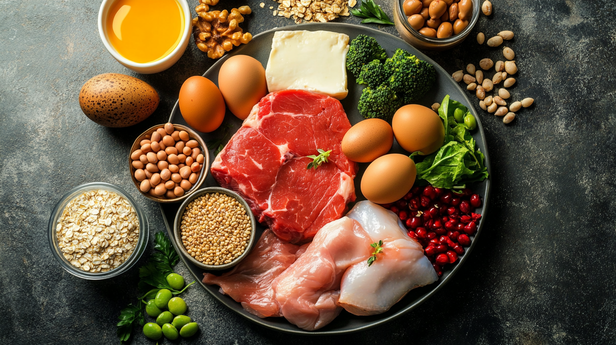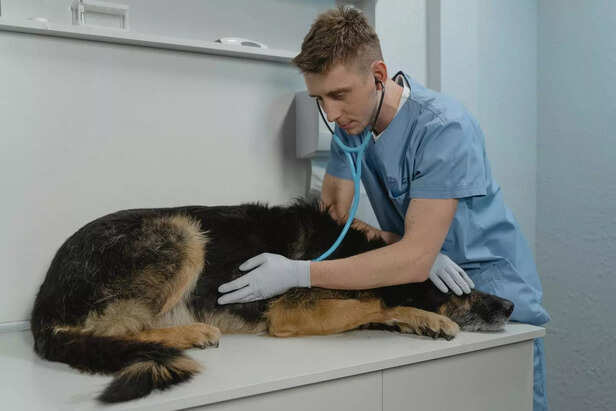How to Tell If Your Dog Has a Food Allergy – Symptoms & Solutions!
Nikita Kanyal | Mar 18, 2025, 22:55 IST
( Image credit : Times Pets )
Is your dog constantly itching, scratching, or dealing with tummy troubles? It could be a food allergy—and you might not even know it! Many pet parents mistake these symptoms for minor issues, but hidden allergens in your dog’s food could be causing chronic skin problems, ear infections, and digestive distress. Learn how to spot the warning signs, diagnose the allergy, and choose the right food to keep your furry friend happy and itch-free! Plus, discover the best hypoallergenic diets and simple home remedies to eliminate allergies for good!
Does your dog suffer from itchy skin, constant ear infections, or an upset stomach? It could be more than just bad luck—it might be a food allergy! Many pet parents overlook the signs, mistaking them for common health issues. But food allergies in dogs are real, serious, and totally treatable once you know what to look for! Let’s break down the symptoms, causes, and solutions so your furry friend can live a happy, itch-free life.

A food allergy happens when your dog's immune system mistakenly attacks certain proteins in their diet, treating them as dangerous invaders. Unlike a food intolerance (which causes digestive issues), food allergies trigger immune responses that can lead to skin problems, chronic infections, and severe discomfort.
Some of the most common culprits include:
✅ Beef
✅ Dairy
✅ Chicken
✅ Wheat
✅ Eggs
✅ Soy
✅ Fish
2. Common Symptoms of Food Allergies in Dogs

If your dog has a food allergy, you may notice:

There’s no magic test to instantly detect food allergies, but here’s what you can do:
The best way to confirm a food allergy is by switching to a limited-ingredient diet for 8-12 weeks. Here’s how:
1️⃣ Choose a new protein & carb (like venison & sweet potatoes) that your dog has never eaten before.
2️⃣ Avoid all treats, table scraps, and flavored supplements during the trial.
3️⃣ Monitor symptoms closely—if they improve, you’ve likely found the culprit!
4️⃣ Slowly reintroduce old foods to pinpoint the allergen.
If your dog’s symptoms are severe, your vet may recommend allergy testing or a hypoallergenic diet to identify problem ingredients faster.
4. Best Solutions for Food Allergies in Dogs

Once you identify the allergen, switch to a food that avoids the problem ingredient. Some great options include:
Many commercial dog foods contain hidden allergens—so always check the label before buying!
Adding fish oil, coconut oil, and probiotics can help strengthen your dog’s skin and gut health, reducing allergic reactions.
Once you find a diet that works, avoid unnecessary changes to prevent new allergies from developing.
Don’t Ignore the Signs! If your dog is constantly itching, licking, or suffering from stomach issues, don’t dismiss it! Food allergies are common but manageable with the right diet and care. Start by watching for symptoms, trying an elimination diet, and consulting your vet if needed.
1. What Is a Food Allergy in Dogs?

Food Allergy in Dogs
( Image credit : TimesPets Bureau )
A food allergy happens when your dog's immune system mistakenly attacks certain proteins in their diet, treating them as dangerous invaders. Unlike a food intolerance (which causes digestive issues), food allergies trigger immune responses that can lead to skin problems, chronic infections, and severe discomfort.
Some of the most common culprits include:
✅ Beef
✅ Dairy
✅ Chicken
✅ Wheat
✅ Eggs
✅ Soy
✅ Fish
2. Common Symptoms of Food Allergies in Dogs

Symptoms of Food Allergies
( Image credit : Pexels )
If your dog has a food allergy, you may notice:
Skin Problems:
- Excessive itching & scratching (especially around the face, ears, and paws)
- Red, inflamed skin
- Chronic ear infections
- Hot spots (painful sores from licking & biting)
Digestive Issues:
- Vomiting or diarrhea
- Frequent gas or bloating
- Unexplained weight loss
- Loss of appetite
Other Signs:
- Watery eyes & runny nose
- Frequent paw licking
- Head shaking or ear scratching
- Restlessness & irritability
3. How to Diagnose a Food Allergy

Consult a Vet
( Image credit : Pexels )
There’s no magic test to instantly detect food allergies, but here’s what you can do:
Try an Elimination Diet
1️⃣ Choose a new protein & carb (like venison & sweet potatoes) that your dog has never eaten before.
2️⃣ Avoid all treats, table scraps, and flavored supplements during the trial.
3️⃣ Monitor symptoms closely—if they improve, you’ve likely found the culprit!
4️⃣ Slowly reintroduce old foods to pinpoint the allergen.
Consult a Vet
4. Best Solutions for Food Allergies in Dogs

Omega-3s & Probiotics
( Image credit : Times Pets )
Switch to a Hypoallergenic Diet
- Novel protein diets (like duck, venison, or kangaroo)
- Hydrolyzed protein diets (proteins broken down to avoid immune reactions)
- Grain-free diets (if grains are the trigger)
Read Ingredient Labels Carefully!
Introduce Omega-3s & Probiotics
Stick to a Consistent Diet
Don’t Ignore the Signs! If your dog is constantly itching, licking, or suffering from stomach issues, don’t dismiss it! Food allergies are common but manageable with the right diet and care. Start by watching for symptoms, trying an elimination diet, and consulting your vet if needed.
